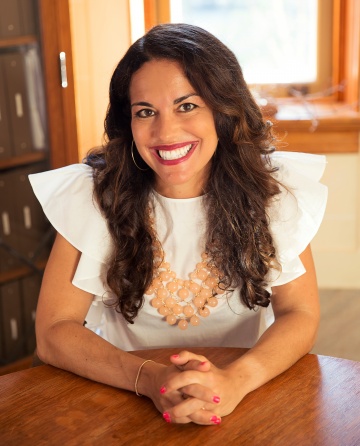Columbia College | Columbia University in the City of New York
A “World” Apart by Natalia Mehlman Petrzela ’00
I always worked during college. I needed the money, but most of the jobs I pursued had the power to provide more than a paycheck. As a freshman work-study employee, I helped upperclassmen in awkward suits drop paper résumés into folders I’d labeled for each investment bank they’d be visiting; I was dutifully studying the “job search process” that both loomed and felt unimaginably distant. Tutoring Harlem middle-schoolers in a Barnard basement taught me about the breaks I’d been so lucky to have that I didn’t even recognize them as privilege — a word back then heard only in seminar discussions. Interning at a glossy magazine in midtown, for which I carefully dressed in my best black pants and borrowed my roommate’s Kate Spade purse, I both figured out the topic for my senior thesis (1920s women’s consumerism) and that the career I had fantasized about since I was a kid devouring BOP then YM then Sassy — New York magazine editor — wasn’t my dream after all.
But the one job that I picked purely for the paycheck — working the front desk at a World Gym — was perhaps the one that shaped me most. Just eight stops on the subway from campus, “World,” as we called it, felt literally a world away from Columbia, at least from my vantage point behind the front desk where I swiped membership cards and handed out folded towels.
The glass-paneled studio with lines of Spandex-swathed students waiting for a star instructor shared little with the dark-paneled classrooms where bleary-eyed students wrestled with Big Ideas. The juice bar that served up health smoothies to sinewy yuppies and hulking gym rats who swirled in their own protein powder contrasted with the upper Broadway bars where I’d sip Midori Sours and drift into conversations laced with a mix of flirtation and smoke so heady its scent pervades all my college memories. The pulsating, packed exercise classes at World (a perk that made me keep the job longer than I needed), were a far cry from the fluorescent-lit campus gym where grad students taught Step, the sounds of the cranked-up boombox distorted and often inaudible over thudding basketballs below.
It was an unlikely world for a bookish, overachieving teenager, but I thrilled at its unabashed physicality. Having always done my best to avoid every gym class, sports tryout or dance class for fear of humiliation, I’d never thought the exhilaration of intense bodily exertion was available to me. From the back of classes, I delighted in the front row made up of professional dancers who whooped and twirled. But I also admired the many who didn’t look especially athletic or graceful, the ones who showed up week after week lugging their clunky gym bags, who left with a glow unimaginable when I checked them in.
My friends thought it was weird that I took classes at World even on days off. Rather than defend my fascination, I shamefully amplified their mockery. I shared anecdotes about the cheesy fake tans of the bodybuilders; the exercise addicts who scaled StairMasters like Sisyphus until I feared they’d snap in half; a trainer who turned orange from a carrot cleanse; the stripper who came in at 4:30 a.m., when I was on the overnight shift, whose face and breasts remained amazingly immobile even as she sprinted on a treadmill. “In another life, I’ll be an aerobics instructor!” I often joked in an effort to deflect their teasing. Now I realize it was to test out an emergent aspiration that would not take shape for years.
Like most of the neat dichotomies that shaped my adolescent worldview, this separation of my scholarly and sweaty pursuits was pathetically simplistic. One night after Advanced Step, I rode the train uptown with my favorite instructor, Natasha. She was also en route to campus, where she was getting an M.F.A. Natasha was also a Columbia student? She must have read my surprise, and was kind enough not to express offense that I had assumed she was “only” an aerobics instructor, even one I revered. (I was not alone in my adoration; The New York Times wrote an article about the lies her obsessed students spun to family and employers in order to make it to her classes.)
Ten years later, I ran into Natasha having brunch at a Miami hotel with her wife, young daughters in their laps. By then an accomplished writer, she laughed when I asked if she was still teaching fitness. “That seems like another life,” she said.
I told her that thanks in part to that brief subway ride, she had inspired me to “do both” in my one life; I was teaching fitness while pursuing a Ph.D. The next time we crossed paths, we were faculty colleagues at The New School, another reminder that the worlds I had once so neatly demarcated were not so distinct after all. Today, I’m writing a book about fitness culture borne in many ways of those blurred boundaries: It explores how exercise went from a strange subculture to social imperative, in the process becoming admirably inclusive but also, at times, oppressively inescapable.
At my front desk perch at World, I had no idea I possessed a front-row seat to a turning point in the history of American fitness culture. World Gym, founded in 1976 as a “Muscle Beach” bodybuilding spot, was transitioning before my eyes into the sleek, coed, health club model that is now a fixture of middle- and upper-class neighborhoods. More important than my personal recollections or professional research, however, is the reminder to resist the impulse to artificially divide and rank our experiences, but instead to seek out and embrace their intersections — even if it takes years for them to become apparent.

DIANA LEE PHOTOGRAPHY
More “Lion’s Den”
- 1 of 5
- ›

